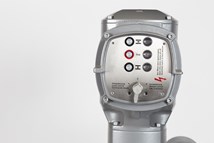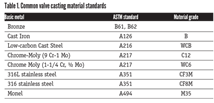Emerson Announces Newest Updates to DeltaV
New capabilities help users collaborate across the enterprise for better business outcomes.
#controls #automation

Emerson has announced the release of version 6.LTS of its . The software has been enhanced to support performance and collaboration across the enterprise, helping eliminate silos of data that limit visibility into operator performance and providing tools to create digital twin simulations that deliver continuous value far beyond project execution.
Capital project teams have used simulation software to provide faster return on investment (ROI) during project execution. Investment in simulation often pays for itself well before project completion as a tool for engineering design, automation testing and operator training. However, forward-thinking teams are further increasing ROI across the lifecycle of their simulation technologies by continuously maintaining them after project execution as collaborative, change management workflow solutions. In the new DeltaV Mimic version 6.LTS, users will find a focus on enterprise connectivity and parallel long-term support (LTS) lifecycle strategy for the (DCS) and DeltaV Mimic. Streamlined model tuning and support for virtual controllers and larger simulations will help companies more easily accomplish their goal of implementing these holistic simulation solutions.
“A digital twin simulation is no longer just a discrete asset to deliver project success, but rather a comprehensive tool for continuous collaboration between process and automation engineering, plant management, training management, operations and maintenance, and more,” said Dustin Beebe, vice president of performance services for Emerson’s process systems and solutions business. “DeltaV Mimic version 6.LTS is designed to streamline that evolution, incorporating Emerson’s Boundless Automation vision for seamless data mobility, to break down the silos of disconnected simulation systems at the plant level and bring the data to the enterprise to cross-functional teams for continuous improvement.”
New enterprise capability in Mimic Train helps eliminate data silos by bringing training data out of the plant and up to the enterprise where organizations can use it in standard learning systems. Armed with comprehensive data, companies will improve record keeping, ensuring training requirements meet the organization’s standards. Enterprise teams will also be able to combine operational data with training history to explore how differences in training may contribute to performance disparities.
DeltaV Mimic version 6.LTS will also improve scalability. Options for subscription licensing via Emerson’s digital experience will make it easier for organizations to distribute and optimize licensing across enterprise architectures. In addition, Emerson has added support for DeltaV DCS virtual controllers while also increasing node support by a factor of nearly 10 to empower users to build larger simulations in a single instance of the software and make it far easier to scale up as operations grow.
The DeltaV Mimic flow tuner has been converted to a user-facing tool to enable users to tune models to their unique process variables, such as flow and temperature. Armed with the capability to tune models in-house, teams will reduce the time it takes to bring models into alignment with actual process performance in the plant.
All new DeltaV Mimic functionality comes as part of a transition to an LTS software strategy, more closely aligning the DeltaV DCS and Mimic software to ensure changes made to either platform are reflected in both, helping users more easily update and maintain their DeltaV solutions as part of a broader enterprise operations platform.
DeltaV Mimic version 6.LTS will be on display at Emerson Exchange 2025, May 19-22 in San Antonio, Texas.
RELATED CONTENT
-
Direct-Sealing Diaphragm Valves Offer Novel Approach
As modern industries such as hydrogen electrolysis and biotech make dramatic technical advances, engineers and researchers must sometimes turn to nontraditional process control systems.
-
The Actuators That Drive Subsea Operations
Subsea development includes different types of activities such as exploration, drilling, completion and production.Subsea manifolds are the arrangement of piping, valves, connections, structures and the foundation used in the subsea production system to receive, combine and distribute the hydrocarbon fluid
-
Editor's Product Picks
Neles introduces valve-sizing and selection software for all intelligent automated process valves.







 Unloading large gate valve.jpg;maxWidth=214)